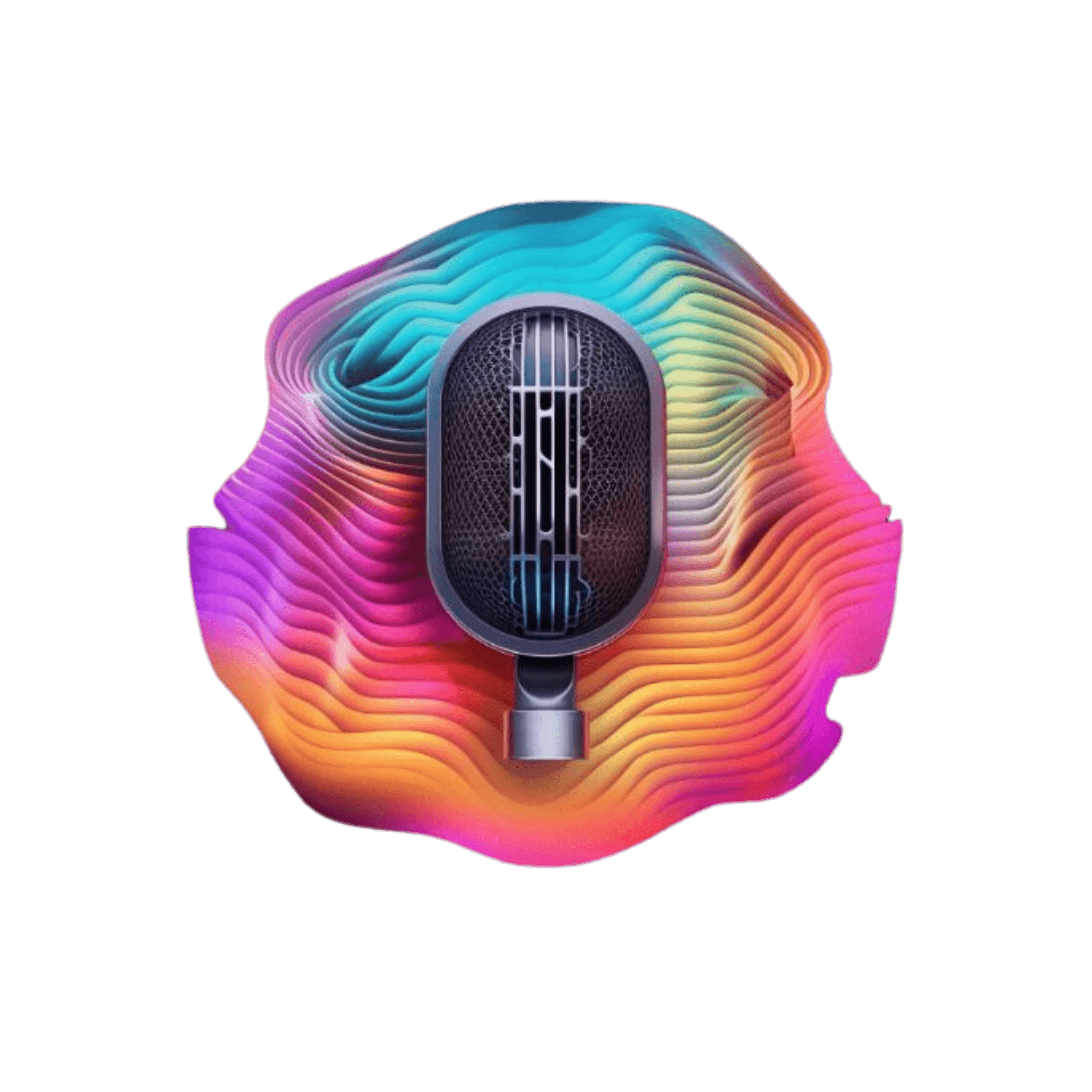
FROM OUR BLOG
FROM OUR BLOG
FROM OUR BLOG
5 Features That Make the Best AI Voice Synthesizer in 2024
Mar 24, 2025



Table of Contents
What Is an AI Voice Synthesizer?
How AI Voice Synthesis Works
What Makes the Best AI Voice Synthesizer in 2024?
Top Use Cases for AI Voice Synthesizers
Why Voicestars Is the Best AI Voice Synthesizer for Creators

What Is an AI Voice Synthesizer?
An AI voice synthesizer is a technology that transforms text, lyrics, or samples into realistic, human-like speech using artificial intelligence. Unlike simple robotic voices of the past, today's top voice synthesizers use neural networks and deep learning to replicate emotion, tone, pitch, and even breathing.
But not all synthesizers are equal.
If you're producing content—whether it's music, YouTube narration, TikTok skits, or audiobooks—you want something that sounds authentic and expressive. That’s why creators are turning to advanced tools like Voicestars.
Voicestars isn’t just a TTS engine—it’s a full voice synthesis platform, with celebrity voice cloning, emotion control, and music-ready features.
How AI Voice Synthesis Works
AI voice synthesizers rely on text-to-speech (TTS) technology, but with far more depth than traditional TTS software.
🔹 1. Text Input
The user enters a script, lyric, or phrase to convert.
🔹 2. Neural Processing
The tool runs the input through models like WaveNet, Tacotron 2, or FastSpeech, converting the text into an audio waveform.
See how WaveNet changed the game →

🔹 3. Voice Modeling
This is where the best AI voice synthesizers shine. Tools like Voicestars offer voice models that clone real artists—so the same line can be spoken by Taylor Swift, Drake, or even you.
🔹 4. Customization & Output
Users can adjust:
Emotion (sad, excited, relaxed)
Pitch and tempo
Accent and language
Format (MP3, WAV)
And then download or publish their synthesized voice.
What Makes the Best AI Voice Synthesizer in 2024?
Here’s what separates basic TTS tools from the best AI voice synthesizers on the market:
🎙 1. Natural Sounding Voice Output
The top platforms create studio-quality results. Voicestars can generate vocals so close to real artists that fans have mistaken AI tracks for actual releases.
Try an AI cover sung by Ariana Grande or a duet between Billie Eilish and Juice WRLD.
🎛 2. Voice Cloning and Celebrity Models
Generic TTS tools might offer 10–20 voices. Voicestars offers over 1,000, including:
These are trained on actual vocal data and are shockingly realistic.

🧠 3. Emotional and Expressive Output
Want your AI voice to sound angry? Or deeply emotional? Or excited? That’s where tools like Voicestars dominate. You can create lines or verses that feel alive—with dramatic pauses, sighs, tone changes, and pacing adjustments.
🎶 4. Music Compatibility
Most synthesizers are made for narration. But Voicestars is designed for:
AI music covers
Original song vocals
Vocal remixes
Lyrics-to-voice singing synthesis
Whether you're remixing with SZA or layering harmonies using your cloned voice, this is where Voicestars stands out.

Top Use Cases for AI Voice Synthesizers
These tools are shaping industries—from indie musicians to influencers, educators, and gamers. Let’s break down the most popular applications:
🎵 1. AI Music Covers & Production
Producers are recreating songs with their favorite artists' voices—even if those artists never touched the track.
✅ Reimagine a rap verse in Kanye West’s tone
✅ Add background vocals in your own cloned voice
✅ Transform lyrics into a full performance
🎥 2. YouTube Voiceovers and Reels
If you’re a content creator, you know how hard it is to record voiceovers every day. AI voice synthesizers can narrate your scripts in custom voices, freeing up your time and improving quality.
Example? Use Sabrina Carpenter to voice your storytime TikToks. Instant views.
📚 3. Audiobooks and Podcast Narration
Instead of hiring expensive talent or narrating hours of content yourself, use an AI voice synthesizer to do it for you.
Voicestars even lets you switch voices mid-paragraph, allowing:
Character dialogue
Dual-host podcast setups
Translated versions with matched energy

🎮 4. Gaming, Discord, and Voice Mods
Deepfake voices in gaming have exploded. Use AI voices to:
Narrate Twitch intros
Add personality to Discord bots
Roleplay characters in RP servers
Voice chat with a clone of Justin Bieber
Why Voicestars Is the Best AI Voice Synthesizer for Creators
With dozens of tools in the market, Voicestars consistently leads for creators—especially those focused on AI music production and content.
Here’s why:
⭐ Massive Voice Library
More artist voices than any other platform. From Taylor Swift to Drake, Voicestars gives you an edge in originality and virality.
🎛 Full Control of Voice Dynamics
Control pitch, speed, emotion, inflection, and more. You’re not just generating a line—you’re crafting a performance.
🧩 Perfect for TikTok, YouTube, Spotify & More
Voicestars offers downloadable files in ready-to-upload formats for all major platforms. No extra editing needed.
🔐 Safe, Transparent, and Ethical
All voices on Voicestars follow ethical use practices. You get access to voice licenses, usage rights, and watermarking options if needed.
👉 See their pricing for commercial plans.

More Ways Creators Are Using AI Voice Synthesizers
While music production and YouTube content are huge use cases, some of the most creative applications of voice synthesis are happening outside the spotlight.
🧑🏫 E-Learning and Education
Educators and course creators are using AI voice synthesizers to:
Narrate lessons in engaging, conversational tones
Clone their own voice for consistent branding
Localize content into other languages or accents
Read text aloud for students with learning differences
Check out how this aligns with the goals of CAST's Universal Design for Learning.
🎮 Interactive Voice Apps & Chatbots
With tools like Voicestars, you can build:
AI-powered game characters with cloned celebrity voices
Virtual assistants that sound like Kanye West or Nicki Minaj
Discord bots that narrate memes in Drake’s voice

📢 Ad Campaigns and Brand Storytelling
Instead of hiring voice actors, marketers are turning to AI voice synthesizers for:
Product explainer videos
Social media campaigns
Personalized voice messages
With Voicestars, you can switch tone and delivery—serious, hype, calm, or quirky—depending on your audience.

Step-by-Step Guide: Create your favourite Ai voice with Voicestars AI
Video Guide
Written Guide
1. Visit the Voicestars Homepage
Go to Voicestars and click “Try now.”

2. Select Your AI Voice or Track
Choose from Bollywood stars, regional accents, or fictional voices.

3. Upload a Song or Add Text for Remixing
Insert an audio clip or type song lyrics for a quick remix.

4. Download and Share Your VoiceTips for Making the Most of AI Voice Covers
FAQs About AI Voice Synthesizers
❓ Can I use AI voice synthesis for commercial projects?
Yes. Voicestars provides licensing for music releases, ad campaigns, videos, and more. Visit the Voicestars pricing pageto choose the right plan.
❓ What’s the difference between TTS and voice synthesis?
Traditional TTS reads text aloud using preset voices. AI voice synthesis replicates how real people speak or sing—down to their accent, tone, and emotion.
❓ Can I create a full song using AI voices?
Absolutely. Voicestars is perfect for AI covers, original compositions, and vocal layering. You can even simulate a full track using voices like Billie Eilish or Kendrick Lamar.
❓ How accurate are the celebrity voices?
The top-tier artist models on Voicestars are hyper-realistic. Each voice is trained using advanced deep learning for both speech and singing. Some TikToks using these voices have gone viral with millions of views.

❓ Can I synthesize my own voice too?
Yes. You can upload voice samples to clone your own tone and create new speech from it. Perfect for scaling your narration, building a virtual twin, or maintaining a consistent audio brand.
If You Want to Try Voicestars Free AI Voice Generator, You Can Try Out 1000+ Celebrity Voices, Like:
...and hundreds more available on the Voicestars platform.
Related Readings
Table of Contents
What Is an AI Voice Synthesizer?
How AI Voice Synthesis Works
What Makes the Best AI Voice Synthesizer in 2024?
Top Use Cases for AI Voice Synthesizers
Why Voicestars Is the Best AI Voice Synthesizer for Creators

What Is an AI Voice Synthesizer?
An AI voice synthesizer is a technology that transforms text, lyrics, or samples into realistic, human-like speech using artificial intelligence. Unlike simple robotic voices of the past, today's top voice synthesizers use neural networks and deep learning to replicate emotion, tone, pitch, and even breathing.
But not all synthesizers are equal.
If you're producing content—whether it's music, YouTube narration, TikTok skits, or audiobooks—you want something that sounds authentic and expressive. That’s why creators are turning to advanced tools like Voicestars.
Voicestars isn’t just a TTS engine—it’s a full voice synthesis platform, with celebrity voice cloning, emotion control, and music-ready features.
How AI Voice Synthesis Works
AI voice synthesizers rely on text-to-speech (TTS) technology, but with far more depth than traditional TTS software.
🔹 1. Text Input
The user enters a script, lyric, or phrase to convert.
🔹 2. Neural Processing
The tool runs the input through models like WaveNet, Tacotron 2, or FastSpeech, converting the text into an audio waveform.
See how WaveNet changed the game →

🔹 3. Voice Modeling
This is where the best AI voice synthesizers shine. Tools like Voicestars offer voice models that clone real artists—so the same line can be spoken by Taylor Swift, Drake, or even you.
🔹 4. Customization & Output
Users can adjust:
Emotion (sad, excited, relaxed)
Pitch and tempo
Accent and language
Format (MP3, WAV)
And then download or publish their synthesized voice.
What Makes the Best AI Voice Synthesizer in 2024?
Here’s what separates basic TTS tools from the best AI voice synthesizers on the market:
🎙 1. Natural Sounding Voice Output
The top platforms create studio-quality results. Voicestars can generate vocals so close to real artists that fans have mistaken AI tracks for actual releases.
Try an AI cover sung by Ariana Grande or a duet between Billie Eilish and Juice WRLD.
🎛 2. Voice Cloning and Celebrity Models
Generic TTS tools might offer 10–20 voices. Voicestars offers over 1,000, including:
These are trained on actual vocal data and are shockingly realistic.

🧠 3. Emotional and Expressive Output
Want your AI voice to sound angry? Or deeply emotional? Or excited? That’s where tools like Voicestars dominate. You can create lines or verses that feel alive—with dramatic pauses, sighs, tone changes, and pacing adjustments.
🎶 4. Music Compatibility
Most synthesizers are made for narration. But Voicestars is designed for:
AI music covers
Original song vocals
Vocal remixes
Lyrics-to-voice singing synthesis
Whether you're remixing with SZA or layering harmonies using your cloned voice, this is where Voicestars stands out.

Top Use Cases for AI Voice Synthesizers
These tools are shaping industries—from indie musicians to influencers, educators, and gamers. Let’s break down the most popular applications:
🎵 1. AI Music Covers & Production
Producers are recreating songs with their favorite artists' voices—even if those artists never touched the track.
✅ Reimagine a rap verse in Kanye West’s tone
✅ Add background vocals in your own cloned voice
✅ Transform lyrics into a full performance
🎥 2. YouTube Voiceovers and Reels
If you’re a content creator, you know how hard it is to record voiceovers every day. AI voice synthesizers can narrate your scripts in custom voices, freeing up your time and improving quality.
Example? Use Sabrina Carpenter to voice your storytime TikToks. Instant views.
📚 3. Audiobooks and Podcast Narration
Instead of hiring expensive talent or narrating hours of content yourself, use an AI voice synthesizer to do it for you.
Voicestars even lets you switch voices mid-paragraph, allowing:
Character dialogue
Dual-host podcast setups
Translated versions with matched energy

🎮 4. Gaming, Discord, and Voice Mods
Deepfake voices in gaming have exploded. Use AI voices to:
Narrate Twitch intros
Add personality to Discord bots
Roleplay characters in RP servers
Voice chat with a clone of Justin Bieber
Why Voicestars Is the Best AI Voice Synthesizer for Creators
With dozens of tools in the market, Voicestars consistently leads for creators—especially those focused on AI music production and content.
Here’s why:
⭐ Massive Voice Library
More artist voices than any other platform. From Taylor Swift to Drake, Voicestars gives you an edge in originality and virality.
🎛 Full Control of Voice Dynamics
Control pitch, speed, emotion, inflection, and more. You’re not just generating a line—you’re crafting a performance.
🧩 Perfect for TikTok, YouTube, Spotify & More
Voicestars offers downloadable files in ready-to-upload formats for all major platforms. No extra editing needed.
🔐 Safe, Transparent, and Ethical
All voices on Voicestars follow ethical use practices. You get access to voice licenses, usage rights, and watermarking options if needed.
👉 See their pricing for commercial plans.

More Ways Creators Are Using AI Voice Synthesizers
While music production and YouTube content are huge use cases, some of the most creative applications of voice synthesis are happening outside the spotlight.
🧑🏫 E-Learning and Education
Educators and course creators are using AI voice synthesizers to:
Narrate lessons in engaging, conversational tones
Clone their own voice for consistent branding
Localize content into other languages or accents
Read text aloud for students with learning differences
Check out how this aligns with the goals of CAST's Universal Design for Learning.
🎮 Interactive Voice Apps & Chatbots
With tools like Voicestars, you can build:
AI-powered game characters with cloned celebrity voices
Virtual assistants that sound like Kanye West or Nicki Minaj
Discord bots that narrate memes in Drake’s voice

📢 Ad Campaigns and Brand Storytelling
Instead of hiring voice actors, marketers are turning to AI voice synthesizers for:
Product explainer videos
Social media campaigns
Personalized voice messages
With Voicestars, you can switch tone and delivery—serious, hype, calm, or quirky—depending on your audience.

Step-by-Step Guide: Create your favourite Ai voice with Voicestars AI
Video Guide
Written Guide
1. Visit the Voicestars Homepage
Go to Voicestars and click “Try now.”

2. Select Your AI Voice or Track
Choose from Bollywood stars, regional accents, or fictional voices.

3. Upload a Song or Add Text for Remixing
Insert an audio clip or type song lyrics for a quick remix.

4. Download and Share Your VoiceTips for Making the Most of AI Voice Covers
FAQs About AI Voice Synthesizers
❓ Can I use AI voice synthesis for commercial projects?
Yes. Voicestars provides licensing for music releases, ad campaigns, videos, and more. Visit the Voicestars pricing pageto choose the right plan.
❓ What’s the difference between TTS and voice synthesis?
Traditional TTS reads text aloud using preset voices. AI voice synthesis replicates how real people speak or sing—down to their accent, tone, and emotion.
❓ Can I create a full song using AI voices?
Absolutely. Voicestars is perfect for AI covers, original compositions, and vocal layering. You can even simulate a full track using voices like Billie Eilish or Kendrick Lamar.
❓ How accurate are the celebrity voices?
The top-tier artist models on Voicestars are hyper-realistic. Each voice is trained using advanced deep learning for both speech and singing. Some TikToks using these voices have gone viral with millions of views.

❓ Can I synthesize my own voice too?
Yes. You can upload voice samples to clone your own tone and create new speech from it. Perfect for scaling your narration, building a virtual twin, or maintaining a consistent audio brand.
If You Want to Try Voicestars Free AI Voice Generator, You Can Try Out 1000+ Celebrity Voices, Like:
...and hundreds more available on the Voicestars platform.
Related Readings
More Update




